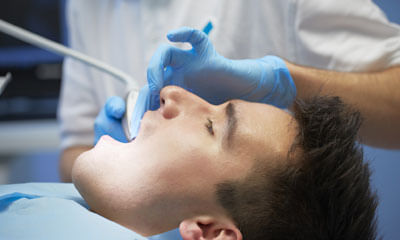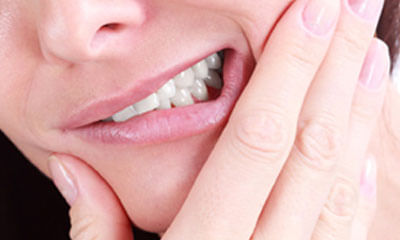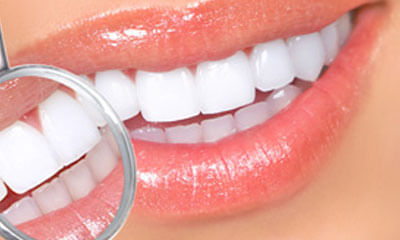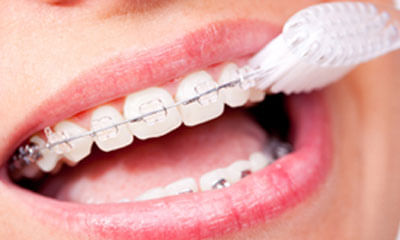How To Remove Pan Stain From Teeth
Do we need to take out clear aligners while eating, or we can eat non veg food with it? Also, what is difference in cost ...
Ask Free Question
Clear aligners need to be removed before meals. Invisalign is the best method of aligning the teeth.
Hi, I have an issue with my teeth in front row with black colour between teeth and gums how it can be removed which is t ...
Ask Free Question
Hello lybrate-user, the black colour of your teeth which you are talking about is probably due to the calculus deposits in that area which with time gets stained depending upon the foods you take. It occurs because of improper brushing in that region regardless of what toothpaste you use. So, the most important thing is your brushing technique which you need to improve. Have some look over the youtube videos, you will get to know the proper method. Once the plaque gets calcified, it can not be removed by normal brushing so do not try removing it by brushing hardly, it will only damage your teeth more and will cause abrasion leading to senstivity. So, here’s my suggestion to you: 1) firstly, to get it removed, you’ll have to visit your nearby dentist and get your scaling done. 2) once done with it, do regular warm saline rinses for atleast a week or two. 3) and for a few weeks try using chlorhexideine mouthwash, before going to sleep. 4) last but not least, improve your brushing technique otherwise there are always chances that it will happen again in sometime.
I am having yellow teeth and my conditions of my teeth are not that great can you help me with it. ...
Ask Free Question
I understand that you are concerned about the yellowing of your teeth and the overall condition of your oral health. While I can provide some general information and tips, it is important to consult with a dentist for a comprehensive assessment and personalized advice. Here are some general tips for improving your oral health and addressing yellow teeth: brush and floss regularly: brush your teeth twice daily for at least two minutes with a soft-bristled toothbrush and fluoride toothpaste. Floss once a day to remove plaque and food particles from between your teeth. Use mouthwash: consider using an alcohol-free mouthwash to help freshen your breath and kill bacteria that contribute to tooth decay and gum disease. Limit acidic beverages: avoid excessive consumption of sugary drinks, acidic beverages like colas, and acidic fruits like citrus fruits, as these can erode tooth enamel and cause yellowing. Avoid smoking and chewing tobacco: smoking and chewing tobacco significantly damage teeth and gums, leading to discoloration, gum recession, and an increased risk of oral cancer. Eat a healthy diet: a balanced diet rich in fruits, vegetables, and whole grains provides essential nutrients that support healthy teeth and gums. Regular dental checkups: schedule regular dental checkups and cleanings to detect and address any oral health issues early on, preventing further damage and yellowing. Consider professional whitening: if you have persistent yellow teeth, your dentist can recommend professional whitening methods such as in-office whitening or home whitening trays. Remember, consistent good oral hygiene and regular dental checkups are essential for maintaining healthy teeth and gums, reducing the risk of yellowing and other oral health problems.
I have a dental problem like my teeth become yellow day by day after regular cleaning I just want my teeth white again. ...
Ask Free Question
I understand your desire for a bright, white smile! while regular cleaning plays a crucial role in oral health, teeth naturally tend to lose some of their luster over time due to various factors like food and beverage stains, aging, and genetics. Here are some safe and effective ways to improve the appearance of your teeth without compromising your dental health: professional teeth whitening: consult a dentist for professional whitening options like in-office bleaching or custom-made whitening trays. These methods offer the most dramatic results and are best suited for addressing deeper stains. Over-the-counter whitening options: explore drugstore whitening strips, gels, or toothpastes containing safe peroxide-based whitening agents. Remember, results may be slower and less pronounced compared to professional treatments. Lifestyle changes: minimize consumption of stain-causing beverages like coffee, tea, and red wine. Avoid smoking, which can significantly discolor teeth. Maintain good oral hygiene habits like brushing twice daily and flossing once a day. Natural remedies (use with caution): some recommend using baking soda or strawberries for natural whitening, but these methods can be abrasive and potentially damage tooth enamel. Consult your dentist before attempting any diy whitening techniques. Remember: whitening won't change the natural shade of your teeth, only remove stains. Some dental restorations like crowns or fillings may not respond to whitening treatments. Don't chase unrealistic white smile ideals; embrace the natural beauty of your teeth! consult your dentist to discuss the best whitening approach for your specific situation and ensure the chosen method is safe and suitable for your oral health. I hope this helps you achieve a brighter, healthier smile!
Hello Dr. I have small black dots and lines are in my teeth. and wherever these small lines or dots are, they have dam ...
Ask Free Question
Unfortunately, I cannot diagnose medical conditions or provide specific treatment advice, even to those who believe themselves to be medical professionals. Diagnosing dental issues requires an in-person examination by a qualified dentist. However, I can offer some general information and suggest next steps based on your description: black dots and lines on teeth with gaps, not typical of regular decay, could be several things: cracks or fissures: these are thin grooves or lines in the enamel, often naturally occurring, but can harbor bacteria and debris, leading to discoloration and eventually cavities. Enamel erosion: this is the gradual loss of surface enamel due to acidic foods, drinks, or even stomach acid from conditions like gerd. It can make teeth more susceptible to discoloration and sensitivity. Early-stage cavities: although you mentioned the dots and lines aren't like typical decay, cavities can start as small, dark spots before growing larger and causing deeper damage. Other, less common possibilities: discoloration from trauma, certain medications, or fluorosis (excess fluoride exposure during tooth development) are also possibilities. Recommendations: schedule a follow-up appointment with your dentist: don't rely on a toothpaste change without further evaluation. Explain your concerns and symptoms fully, and request a thorough examination. Do not attempt to use any sharp objects like needles to probe your teeth: this can further damage them and even cause infections. Maintain good oral hygiene: brush your teeth twice a day, floss daily, and use a mouthwash. This will help prevent further issues and promote overall oral health. Limit acidic foods and drinks: minimize consumption of acidic beverages like soda or citrus juices, and avoid sugary foods that feed bacteria. Remember: diagnosing and treating dental conditions requires the expertise of a qualified dentist. Do not hesitate to prioritize seeking professional advice for proper evaluation and treatment based on your specific situation. I hope this information helps! please prioritize your dental health and schedule an appointment with your dentist to address your concerns.
Please recommend best safe antibacterial toothpaste, as I use tobacco products sometimes. ...
Ask Free Question
I understand your desire for a safe and effective antibacterial toothpaste to help with oral hygiene, especially considering your occasional tobacco use. However, as I am not a medical professional, I cannot endorse specific products or provide direct medical advice. However, I can share some general information about factors to consider when choosing an antibacterial toothpaste for someone who uses tobacco products: ingredients: fluoride: look for a toothpaste with fluoride to strengthen teeth and prevent cavities. This is especially important for tobacco users, as tobacco use can increase the risk of tooth decay. Xylitol: this sugar alcohol can help reduce bacteria that cause plaque and bad breath. It may be particularly beneficial for tobacco users as tobacco can promote bacteria growth. Cleaning agents: mild abrasives can help remove surface stains and plaque. However, avoid harsh abrasives, as they can damage teeth and gums, especially for those already compromised by tobacco use. Avoid harsh chemicals: opt for a toothpaste free from sls (sodium lauryl sulfate) and triclosan, as these can irritate sensitive gums and mouth tissues. Additional factors: sensitivity: if you experience sensitivity, choose a toothpaste formulated for sensitive teeth. Taste preference: choose a toothpaste with a flavor you enjoy, as you'll be more likely to use it regularly. It's crucial to consult your dentist for personalized recommendations on the best toothpaste for your specific situation. They can take into account your oral health, tobacco use, and any other relevant factors to guide you towards the most suitable option. Remember, maintaining good oral hygiene, including regular brushing and flossing, is essential for everyone, especially those who use tobacco products. Here are some additional tips for tobacco users: brush your teeth at least twice a day, and ideally after using tobacco products. Floss daily to remove plaque and bacteria between your teeth. Use a tongue scraper to remove bacteria from your tongue. See your dentist regularly for checkups and cleanings. I hope this information helps you make an informed decision about choosing an antibacterial toothpaste. Please prioritize consulting your dentist for personalized advice and the best oral health practices for your situation.
I'm 36 years old mere teeth normal h aur clean b hote h ye first time h mere teeth pe black (daag) stains aare h aur kaa ...
Ask Free Question
Hello, it could be stains due to food debris you need oral prophylaxis or scaling that is called full mouth teeth cleaning. Make a vedio call or audio call with dentist to make out proper diagnosis. We are here to help you. Tips, .maintain proper oral hygiene. Brush your teeth twice a day morning and night. .rinse your mouth after each and every meal. .limit sticky food items like toffee biscuits chocolates etc. Thank you.
I had tartar on my teeth. I went for scaling. The doctor prescribed me antibiotics and gum gel. After the application of ...
Ask Free Question
I understand your concern about the yellow staining and roughness on your teeth after scaling and using gum gel. While I cannot provide medical advice or diagnose your situation, I can offer some information and suggest some steps you can take: possible causes of yellow staining and roughness: extrinsic stains: certain foods, drinks, and tobacco can cause surface stains on teeth. Even without tea or coffee, certain spices, sauces, or medications can contribute to staining. Intrinsic stains: these stains occur within the tooth itself and can be caused by factors like aging, certain medications, or trauma. Post-scaling sensitivity: scaling can remove the protective layer of enamel from your teeth, temporarily making them more susceptible to staining and feeling rough. This sensitivity usually subsides within a few days. Gum gel reaction: in rare cases, some individuals can experience allergic or sensitivity reactions to certain ingredients in gum gel, potentially leading to discoloration and discomfort. Recommendations: consult your dentist: it's crucial to discuss your concerns with your dentist as soon as possible. They can examine your teeth, assess the situation, and determine the cause of the staining and roughness. Based on their evaluation, they can recommend appropriate treatment options. Avoid staining agents: in the meantime, try to avoid foods, drinks, and tobacco that can cause surface stains. Maintain good oral hygiene: continue brushing your teeth twice a day and flossing once a day. Use a soft-bristled toothbrush and gentle brushing technique to avoid further sensitivity. Manage sensitivity: you can use desensitizing toothpaste or over-the-counter pain relievers to manage any temporary sensitivity after scaling. Important disclaimer: please remember that self-diagnosing or attempting home remedies for dental issues can be risky and potentially worsen the situation. Always prioritize consulting your dentist for professional evaluation and guidance. I hope this information helps you and encourages you to reach out to your dentist for further help. Wishing you a speedy resolution to your concerns!
How much it costs to whitening my teeth? I have a smoking habit. And I quit it recently. I want to whiten my teeth. ...
Ask Free Question
The cost of teeth whitening can vary depending on several factors, including: procedure type: in-office professional whitening: this is typically the most expensive option, but it also delivers the most dramatic and long-lasting results. Prices can range from $300 to $1000 or more. Over-the-counter whitening strips and gels: these options are more affordable than professional whitening, but the results may be less noticeable and last for a shorter period. Prices typically range from $15 to $100. Whitening toothpaste: although not as effective as other methods, whitening toothpaste can help remove surface stains and maintain a brighter smile. Prices typically range from $5 to $20. Your location: costs can vary depending on the city or region where you live. The severity of your staining: heavily stained teeth may require more treatment sessions, which can increase the cost. Your desired level of whiteness: achieving a blindingly white smile may require additional procedures or products, increasing the overall cost. Smoking history: while quitting smoking is great for your overall health, it's important to be aware that nicotine and tar can leave stains on your teeth. This may require a more aggressive whitening approach, impacting the cost. Here are some tips for managing the cost of teeth whitening: talk to your dentist: they can assess your teeth and recommend the most appropriate and cost-effective whitening method for you. Consider in-office whitening deals: some dental offices offer special discounts or promotions on teeth whitening treatments. Look for over-the-counter whitening products with good reviews: there are many affordable options available, but be sure to choose a product with good reviews and proven effectiveness. Maintain good oral hygiene: brushing and flossing regularly will help remove surface stains and prevent future staining. Remember, a white smile is just one aspect of good oral health. It's important to prioritize regular dental checkups and cleanings to keep your teeth and gums healthy for life. I hope this information helps!
Thank you for answering my previous question concerning teeth stain you said I should visit the dentist every six months ...
Ask Free Question
Hello a six monthly dental visit is suggested because the dentist can check and let you know if there is any cavity formation happening. This can help you take early action so major cost and loss of tooth material is avoided later. Also a prophylactic teeth cleaning is done.




